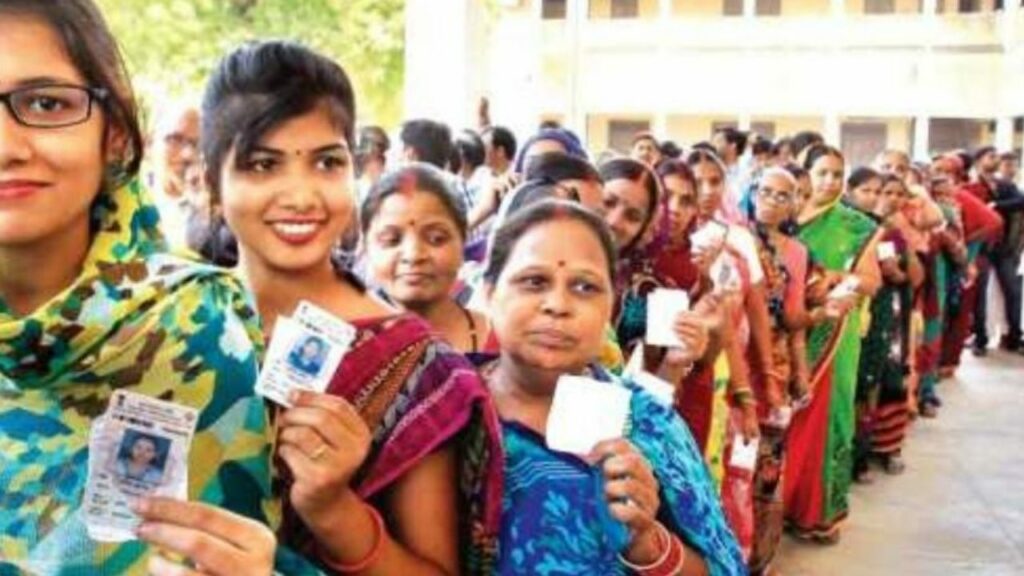There is a major shift in India’s electoral landscape which is much closer than we realize.

In a latest update by a SBI report suggests that the women voters in India will surpass male voters from 2029 onwards.
More Women Participation Anticipated In 2029 Election
Describing it further in the SBI report, it has projected a total voter turnout of around 68 crore, of which women voters could be at 33 crore (49%) for the upcoming general election in 2024.
In simple words, the women voters at 37 crore could be outstripping registered men voters at 36 crore from 2029 onwards, as highlighted in the SBI report.
In its further projection, women’s voter turnout might increase to 55% in 2047 and, contrary to that, men’s voter turnout might fall to 45%.
And why not! as we have already witnessed the rising participation of women in India’s political arena during the past one decade.
If we go back in history, only eight crore voted during the 1951 elections.
The numbers had improved during 2009 elections, at 42 crores, of which 19 crores were women.
Again, the voter turnout increased by 13.7 crore to 55 crore of which 26 crores were women in 2014.
In a closure look, you can witness it higher for women at 5.8x and 5.2x for men.
When it came to the 2019 Lok Sabha elections, again female voter turnout rate was higher than males.
The same is confirmed by the figures where almost 67.18% of women voters cast a vote in the 2019 general election in contrast to 67.01% of males.
Need Of Improvement In Women Representation
This effect of the rise in women’s voter turnout is even more pronounced in state assembly elections.
In the past five years, out of the 23 major states where polls happened further indicated that women’s voter turnout was higher than that of men in 18 states.
It is noteworthy here that out of the 18 states, the same government was re-elected in 10 states where women voter participation was more than men.
Women are showing great participation while voting, but the same can not be said for getting a ticket and being elected.
For instance, 15% of the total members of the 17th Lok Sabha are women presently.
The numbers further deteriorate in case of state legislative assemblies as women on average constitute 9% of the total members.
If we take a look at some of the Scandinavian countries such as Sweden, Norway, and South Africa, they have more than 45% women representation in their national legislatures.
We definitely need to do some work in this regard. Japan also lags behind like India at 10%.













